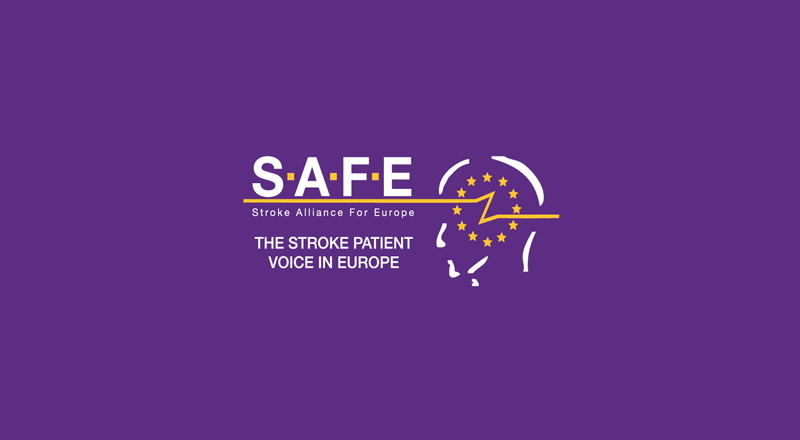
May 14, 2018
Posted on Friday May 11, 2018 by The Foundry Healthcare
I am a child of immigration. Both my parents came to the UK for their education, and because of this the value and importance of education has been a strong influence in my life. I believe that education can equalise the playing field, it can transform the potential of anyone and can create real change. To me the Stroke Support Organisation Faculty Tool, SSOFT, incorporates these important aspects; equal access, increased potential and the means to change things for the better. (more…)
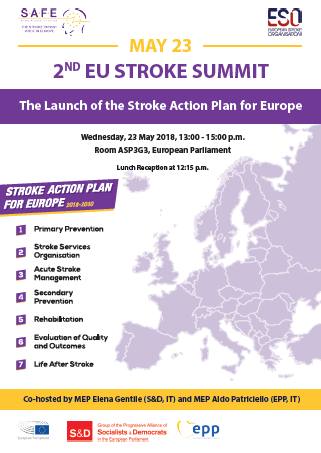
May 11, 2018
Stroke Action Plan for Europe 2018-2030
Basel and Brussels, 11 May 2018 – Just one year after signing a Memorandum of Understanding, the European Stroke Organisation (ESO) and the Stroke Alliance for Europe (SAFE) are proud to present the “The Stroke Action Plan for Europe 2018-2030”, with the aim of significantly improving stroke care and Life after Stroke for the millions of people expected to have strokes over the next 12 years.
ESO and SAFE will present the Stroke Action Plan for Europe to the medical world for the first time in a joint session at ESOC in Gothenburg on Thursday, 17 May. In addition to speakers from ESO and SAFE, the World Health Organisation (WHO) perspective on Joining Forces in Combating Stroke in Europe will be presented. (more…)
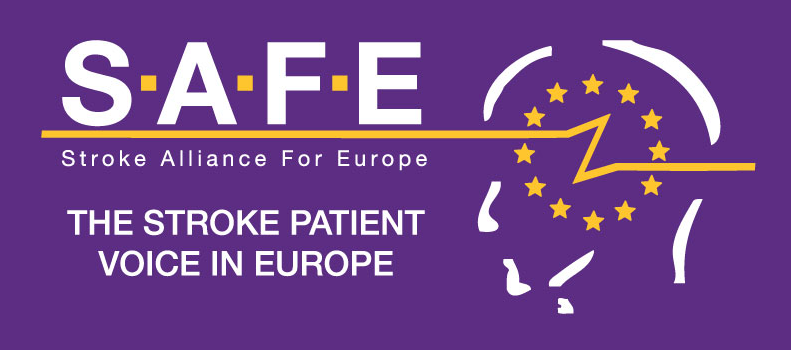
May 8, 2018
The Stroke Alliance for Europe (SAFE) and its members from 30 European countries are committed to raising awareness of stroke
Brussels, 8th May 2018- This May, SAFE and its members have many activities to be proud of. We have managed to successfully complete a joint project with the European Stroke Organisation (ESO), the Stroke Action Plan for Europe 2018-2030.
The project will first be presented to the medical world at this year’s European Stroke Congress in Gothenburg, Sweden on Thursday, 17 May 2018.
After that, the main recommendations in the Stroke Action Plan will be launched to politicians and the public at the European Parliament on 23 May at the 2nd EU Stroke Summit. (more…)
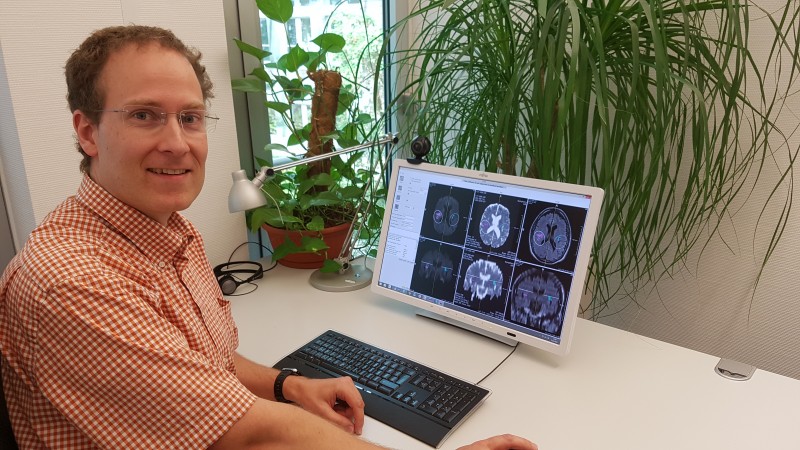
May 7, 2018
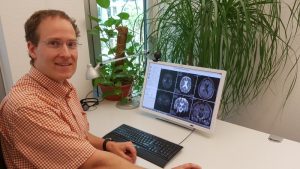
Jan Klein; Photo by Fraunhofer MEVIS
Stroke is a devastating disease leading to death and disability in large numbers of patients with massive social and economic impact. Intravenous thrombolysis with Alteplase is available as an effective and safe treatment of acute stroke if given within 4.5 hours of symptom onset.
However, in about 20% of acute stroke patients the time of symptom onset is unknown e.g. because symptoms are recognized when waking-up from sleep in the morning. This large group of patients is currently excluded from treatment with Alteplase only due to the missing information on the time of symptom onset.
WAKE-UP was a European multicentre investigator-initiated randomized placebo-controlled clinical trial of MRI based thrombolysis in acute stroke patients with unknown time of symptom onset.
In preparatory work, the WAKE-UP consortium developed an innovative approach of using brain MRI as surrogate marker of stroke lesion age which may be used to identify stroke patients likely to benefit from thrombolysis.
The final results of this trial will be presented at the press conference within ESOC 2018, in Gothenburg, Sweden, from 11:40 to 11:50 CET on Wednesday, 16 May.
As the revealing of the WAKE UP trial results approaches, SAFE used the opportunity to talk with the two scientists, Jan Klein from the Fraunhofer Institute for Medical Image Computing MEVIS, Bremen, Germany and Bastian Cheng, from School of Medicine and University Hospital Hamburg-Eppendorf to learn more about SONIA – the diagnostic imaging software that was developed during the course of the project. (more…)

May 3, 2018
First published on ScienceDaily.com
A study led by Massachusetts General Hospital (MGH) investigators may lead to a significant expansion in the number of stroke patients who can safely be treated with intravenous tPA (tissue plasminogen activator), the “clot busting” drug that has greatly reduced stroke-related disability and deaths in eligible patients. The report, published online in Annals of Neurology, describes the results of a trial using MR-based imaging technologies to identify patients likely to be within 4.5 hours of stroke onset, even though their initial symptoms had not been witnessed. (more…)

May 3, 2018
First published on ScienceDaily.com
The diagnosis is one that a family never wants to hear: Your father has Alzheimer’s disease. Your mother has stroke-related dementia.
A recently released study, included in a special supplement to the Journal of Gerontology, indicates that dementia’s impact might be compressing a bit. That is, people might be developing dementia later and living with it for a shorter period of time. (more…)

May 3, 2018
First published on ScienceDaily.com
An experimental compound appears to improve stroke outcome by reducing the destructive inflammation that can continue months after a stroke, scientists report.
Rats consuming compound 21 following a clot-based stroke — the most common type in humans — don’t have a smaller stroke size but do have better memory and movement in its aftermath, says Dr. Adviye Ergul, vascular physiologist and Regents’ Professor in the Department of Physiology at the Medical College of Georgia at Augusta University. (more…)

May 3, 2018
First published on ScienceDaily.com
A new computer programme developed by scientists at the Universities of Edinburgh and Glasgow can assess whole brain deterioration and help predict cognitive function after stroke up to ten times more accurately than current methods.
The new approach, published today in the International Journal of Stroke, can quantify visible brain injury from cerebral small vessel disease (SVD) and brain atrophy by translating the million plus bits of information stored in brain scans into a single measure, the “brain health index.” (more…)
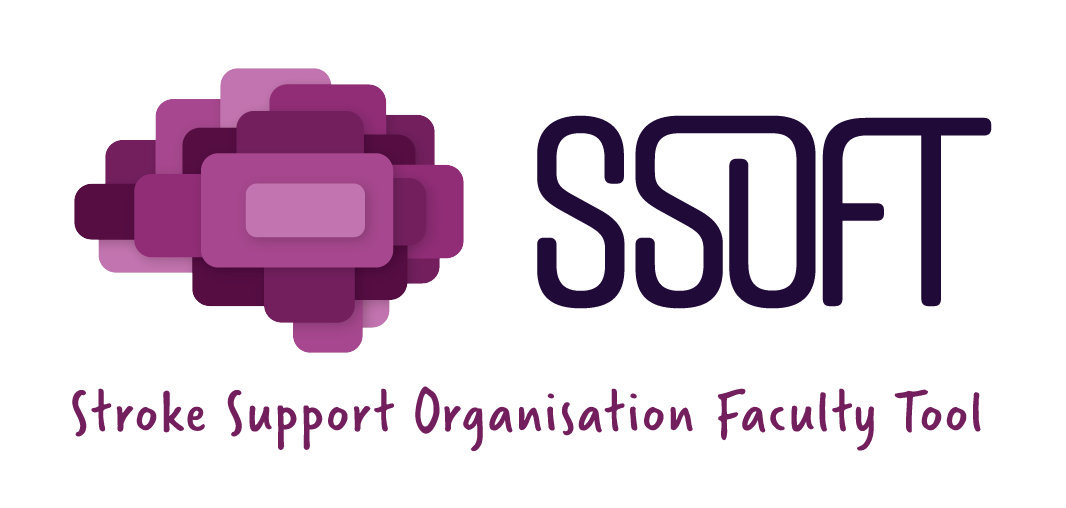
Apr 26, 2018
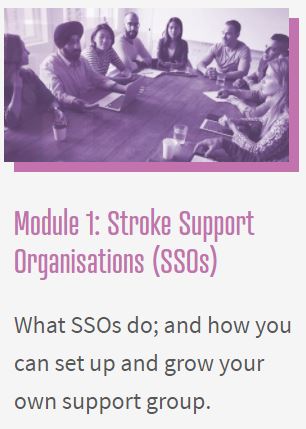
Brussels, 16 April 2018- The eLearning Module 1 of the Stroke Support Organisation Faculty Tool (SSOFT) is published today at the following address www.ssoft.info.
SSOFT’s first module focuses on the principles around developing and growing SSOs, and is delivered in five sub-modules:
1.1 – What is a Stroke Support Organisation?
1.2 – What is the role of a Stroke Support Organisation?
1.3 – How do you set up a Stroke Support Organisation?
1.4 – Growing your Stroke Support Organisation
1.5 – Stroke Support Organisation networking
The module provides learners with a wealth of knowledge and includes videos, interactive content and activities. Learners will be able to work through the sub-modules at their own pace, earn rewards and share their progress on social media. (more…)

Apr 26, 2018
In the 30 min round-table discussion video on ESUS, stroke experts (Valeria Caso, Perugia, Danilo Toni, Rome, and Martin Grond, Siegen) discuss the definition of ESUS, diagnostic workup of ischemic stroke and potential implications of the ongoing trials in ESUS.
Embolic stroke of undetermined source (ESUS) is a type of ischemic stroke with unknown origin, i.e. for which no probable cause can be identified after standard diagnostic evaluation. In contrast, the term ‘cryptogenic stroke’ is less well-defined and includes strokes with unknown sources which have not been fully evaluated or have more than one potential cause. About 1 in 6 ischemic strokes is an ESUS. Patient who suffer from ESUS tend to be slightly younger than stroke patients in general and strokes are less severe on average. However, the risk of stroke recurrence after ESUS is high: Within 5 years, nearly 1 in 3 patients may again suffer another stroke. (more…)












